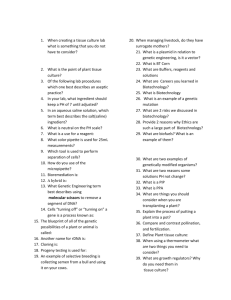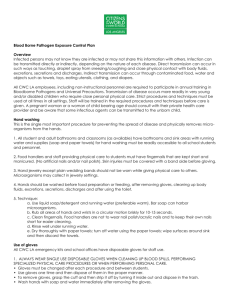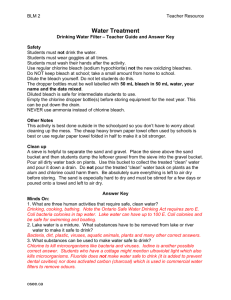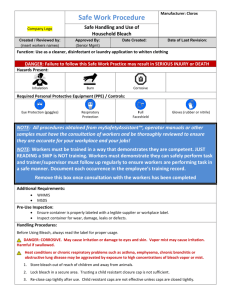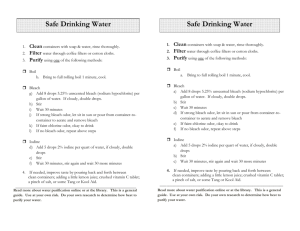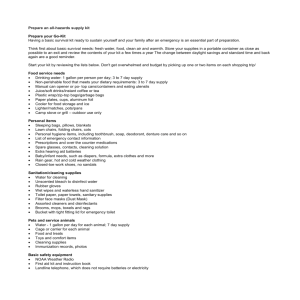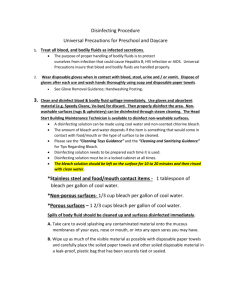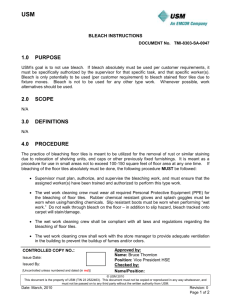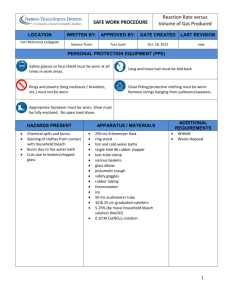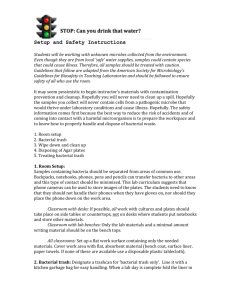Managing a suspected Ebola patient at home (DOC)
advertisement
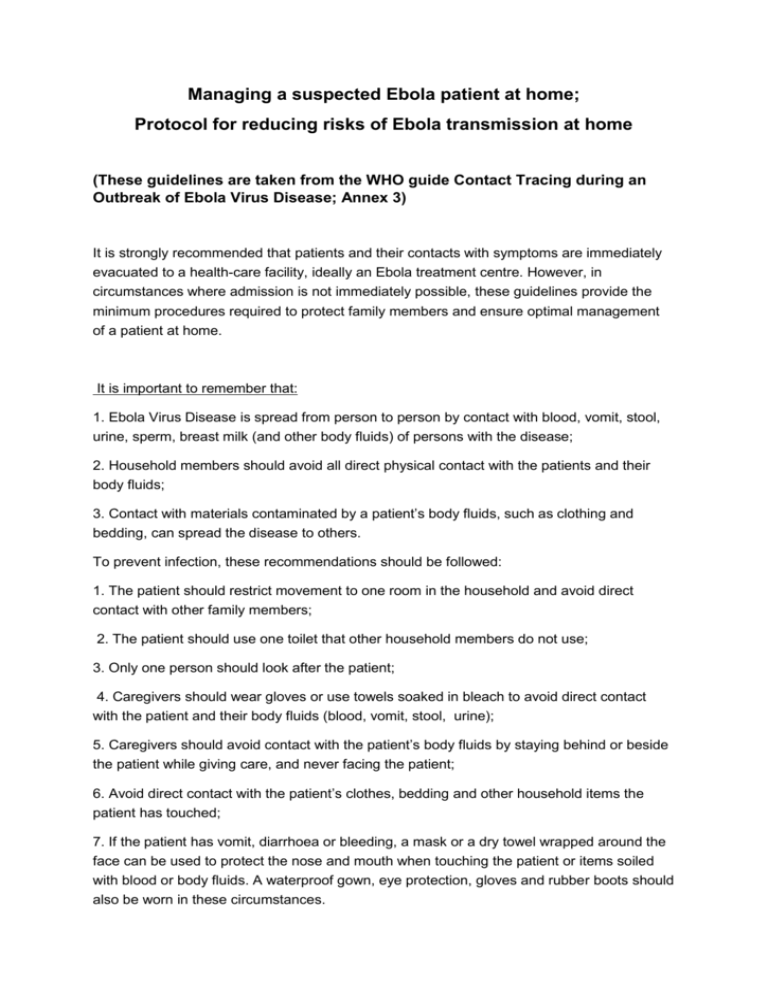
Managing a suspected Ebola patient at home; Protocol for reducing risks of Ebola transmission at home (These guidelines are taken from the WHO guide Contact Tracing during an Outbreak of Ebola Virus Disease; Annex 3) It is strongly recommended that patients and their contacts with symptoms are immediately evacuated to a health-care facility, ideally an Ebola treatment centre. However, in circumstances where admission is not immediately possible, these guidelines provide the minimum procedures required to protect family members and ensure optimal management of a patient at home. It is important to remember that: 1. Ebola Virus Disease is spread from person to person by contact with blood, vomit, stool, urine, sperm, breast milk (and other body fluids) of persons with the disease; 2. Household members should avoid all direct physical contact with the patients and their body fluids; 3. Contact with materials contaminated by a patient’s body fluids, such as clothing and bedding, can spread the disease to others. To prevent infection, these recommendations should be followed: 1. The patient should restrict movement to one room in the household and avoid direct contact with other family members; 2. The patient should use one toilet that other household members do not use; 3. Only one person should look after the patient; 4. Caregivers should wear gloves or use towels soaked in bleach to avoid direct contact with the patient and their body fluids (blood, vomit, stool, urine); 5. Caregivers should avoid contact with the patient’s body fluids by staying behind or beside the patient while giving care, and never facing the patient; 6. Avoid direct contact with the patient’s clothes, bedding and other household items the patient has touched; 7. If the patient has vomit, diarrhoea or bleeding, a mask or a dry towel wrapped around the face can be used to protect the nose and mouth when touching the patient or items soiled with blood or body fluids. A waterproof gown, eye protection, gloves and rubber boots should also be worn in these circumstances. Cleaning: 1. The caregiver should prepare a bleach solution to clean the room, clothes, bedding and others household items touched by the patient. To prepare the bleach solution, mix 1 part of concentrated bleach (5%) with 10 parts of water (fill a cup with the bleach, empty the cup into a bucket and refill the cup with water 10 times, adding the water to the bucket); 2. The bleach solution loses its effectiveness after 24 hours, so fresh solutions must be prepared every morning; 3. Gloves should be worn before entering the room; 4. Hands should be washed with soap and water or an alcohol-based hand rub solution (hand sanitizer), if available, before and after entering the patient’s room and immediately after glove removal; 5. For cleaning blood stains, vomit, stool, or urine: (a) Pour the bleach solution over the blood or other stains and leave for at least 15 minutes; (b) Soak a large towel in the bleach solution; (c) Use the soaked towel to clean the blood; (d) Place the soiled towel in a bucket and cover with the bleach solution; (e) Soiled towels must be soaked in a bucket filled with bleach solution for at least one hour, after which the towels may be washed with soap and reused once dry; 6. Never put bleach or bleach solution in the patient’s or caregiver’s mouth or eyes; 7. Used and soiled bleach must be emptied into the latrine/toilet used by the patient; 8. Use bleach-soaked towels for carrying or moving the patient. Essential items for home use are: - 10 pairs of latex gloves (disposable); - 5 face masks; - Bleach solution of 2 litres diluted; - 1 pair of heavy gloves ; - 2 buckets (bleach solution and waste); - Soap for hand washing and an alcohol-based hand rub solution (hand sanitizer); - Home-based care instructions. (continued next page) Home-based care instructions for contacts with symptoms If you start to feel ill: 1. Seek medical care as soon as possible (immediately inform health workers); 2. Do NOT use aspirin, ibuprofen or diclofenac: These drugs can make bleeding worse; 3. You may take paracetamol (Panadol) for pain or fever; 4. Drink a lot of fluid: Drink oral rehydration solution (ORS). If you do not have ORS in a packet, you can make your own. In 1 litre of clean water, add 6 teaspoons of sugar and ½ teaspoon of salt. Orange juice, mashed banana or water from boiled rice can also be used with juice. If you have diarrhoea, you should try and drink as much fluid as you are losing. Adults should try to drink at least 4 litres a day of clean water mixed as described above.
